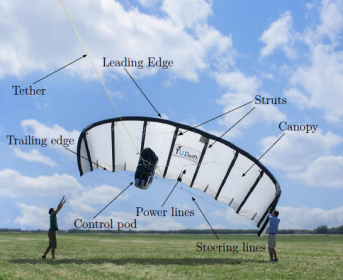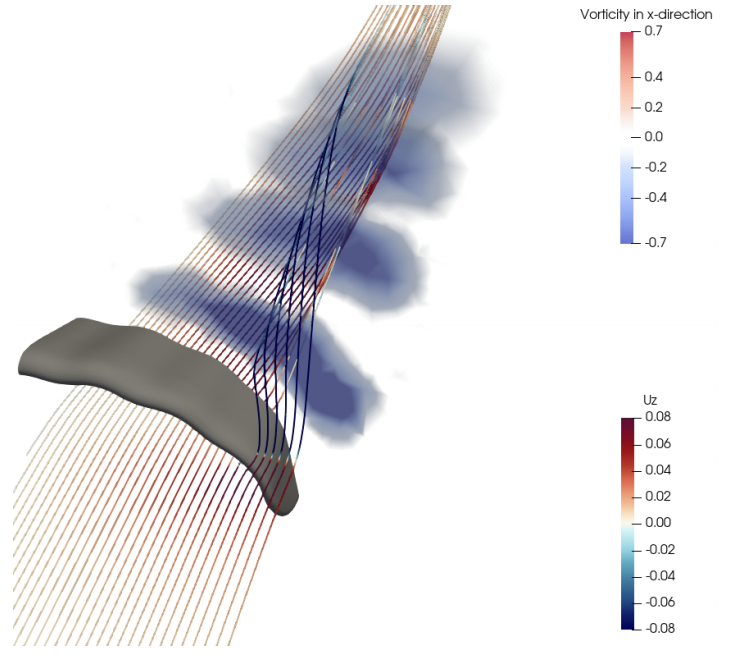Probleemstelling:
Airborne wind energy (AWE) is an emerging and potentially disruptive technology to convert wind energy into electricity. This technology uses either an aircraft or a soft kite attached to a tether (i.e. a cable) and this device performs a pattern in cross-wind flight. AWE systems have the potential to capture wind at greater height than conventional wind turbines, meaning that the wind velocity is typically both higher and more constant in time. In this thesis, the focus is on AWE systems consisting of a soft kite (see figure 1).

Figure 1: A soft kite for airborne wind energy [from Dynamic Nonlinear Aeroelastic Behaviour of Flexible Wings in an Airflow, J. Berens, 2015].
For soft kites, the flow field has already been studied in detail using computational fluid dynamics (CFD, see Figure 2). However, kites are by construction flexible and the aeroelasticity has to be considered by performing fluid-structure interaction (FSI) simulations which take into account both the forces resulting from the flow field and the forces in the structure. Fluid-structure interaction simulations of soft kites have also been performed, but then typically using simplified models for the flow field which can be inappropriate due to the presence of flow separation.

Figure 2: Streamlines and vorticity behind a soft kite for airborne wind energy [from Numerical Analysis of the Flow Past a Leading Edge Inflatable Kite Wing Using a Correlation-based Transition Model, by P. Demkowicz, 2019].